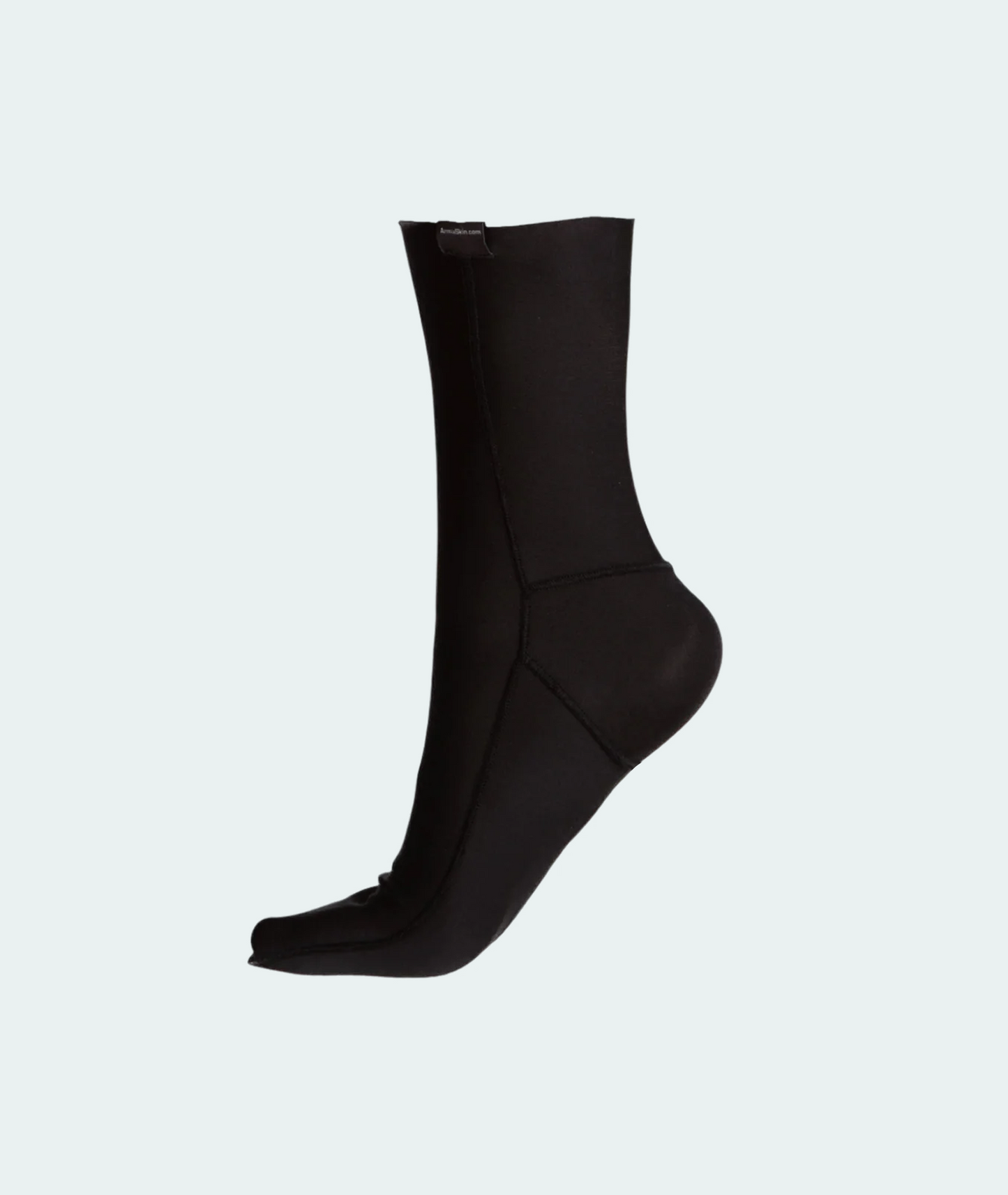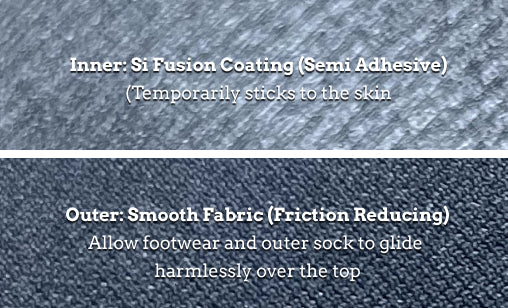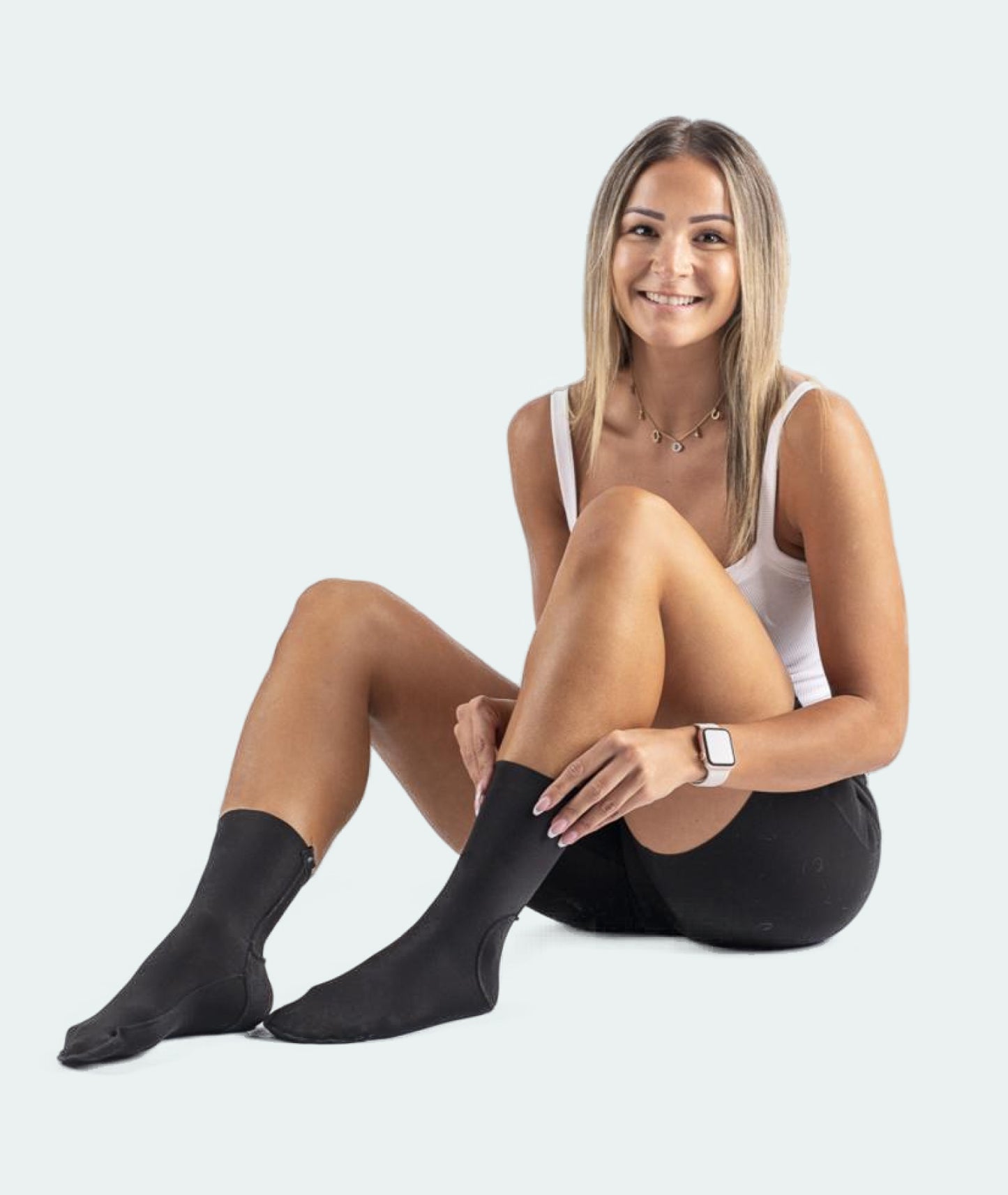Few experiences compare to the thrill of venturing into the rugged wilderness of the Canadian backcountry. Whether you’re planning an ultra-endurance adventure, a challenging tactical exercise, or simply enjoying a weekend hike, planning is essential to ensure your body and gear can keep up with the demands of the trail. One of the most critical aspects of any multi-day hike is hydration management. In this comprehensive guide, we’ll explore how much water you need for a 3-day Canadian backcountry hike, while also covering blister prevention strategies – including why selecting the right hiking socks, such as ArmaSkin socks and anti-blister liners, is crucial to keeping you comfortable and injury-free.
Understanding Your Hydration Needs
The Science Behind Hydration
Water is the lifeblood of our body, especially during strenuous physical activity. As you traverse steep terrain and unpredictable weather, your body loses water through sweat, respiration, and even rapid breathing during exertion. Hydration isn’t just about quenching your thirst—it plays a vital role in regulating body temperature, lubricating joints, and delivering essential nutrients to cells. Experts recommend that active individuals consume between 2 to 3 litres of water per day under moderate conditions, but backcountry hiking introduces variables that can raise this figure considerably.
Factors Influencing Water Requirements
When planning for a 3-day expedition in the Canadian wilderness, consider the following factors that impact your water needs:
Temperature and Humidity: Cooler climates in Canada may reduce perspiration compared to tropical regions; however, altitude and exertion levels can still significantly increase your water needs.
Physical Exertion: The strenuous nature of hiking, especially across rough terrain and changing elevations, demands more hydration.
Weight and Metabolism: Each individual’s metabolism is unique, meaning hydration requirements vary.
Altitude: High altitudes can lead to increased water loss due to faster breathing and drier air.
Trail Conditions: Rocky, steep trails and long distances may lead to increased sweating and fatigue, both of which necessitate additional fluid intake.
In practice, a range of 4 to 6 litres per day may be necessary for the average hiker on a rigorous 3-day backcountry trek. Adjustments might be needed based on real-time conditions and your personal comfort levels.
Planning Your Water Supply
Calculating the Total Water Requirement
Before setting out, calculate the total water you’ll need. For instance, if you require approximately 5 litres per day, for a 3-day hike you’d need about 15 litres. However, this is a baseline estimate. Always add a safety margin (around 20%) for unexpected conditions such as increased activity levels, altitude sickness, or warmer-than-expected days.
A quick formula to guide you would be:
Total Water Needed = (Daily Water Intake × Number of Days) + Safety Margin
Thus, for a 3-day hike:
Don’t Let Blisters Slow You Down!
Discover the ultimate solution with ArmaSkin Anti-Blister Socks. Designed with advanced friction-reducing technology, these socks keep your feet dry, comfortable, and blister-free – no matter the challenge.
Shop NowTotal Water Needed = (5 litres × 3 days) + 3 litres (20% extra)
Total Water Needed = 15 + 3 = 18 litres
Floating vs. Fixed Water Sources
Planning also means knowing what water you'll have access to along the way. Many Canadian backcountry routes include streams, lakes, or even man-made water points. However, water from these sources should always be treated using filters, purification tablets, or UV treatment to avoid potential contaminants. Carrying a reliable water filter in your bag is as essential as packing your food, especially if you’re on a long trail.
Efficient Water Storage and Carrying Solutions
For extended hikes, efficient water storage is key. Consider:
Hydration Bladders: These allow for consistent water delivery on the move and easy refilling if water points are available.
Collapsible Water Bottles: These are lightweight, packable, and flexible to fill as needed.
Water Reservoirs within Backpacks: Many modern hiking backpacks come with dedicated, insulated compartments to protect your water supply from freezing or heating up rapidly.
Remember that water weight adds to your load—balancing between carrying enough water and maintaining mobility is an art that every serious backcountry hiker must master.
Integrating Blister Prevention into Your Hiking Strategy
Why Foot Health Matters
While hydrating is critical to keeping your body functional, it’s also important to consider the less-acknowledged battle against foot blisters. Whether you’re traversing rocky outcrops or wet meadows, friction from improperly fitted footwear can turn a thrilling journey into a painful ordeal. This is why selecting the right pair of hiking socks is as crucial as planning your water intake.
Choosing the Right Socks
Experts agree that moisture management and friction reduction are key to blister prevention. ArmaSkin socks, well-known for their anti-blister technology, offer both comfort and moisture-wicking properties. The blend of high-performance synthetic and natural fibres in ArmaSkin socks ensures durability and a snug, non-slip fit. This makes them one of the best socks for preventing blisters in challenging outdoor conditions.
For even more protection, consider complementing them with anti-blister liners. These liners provide an extra barrier between your skin and the sock, reducing friction and keeping moisture away from vulnerable areas of your feet. Combination strategies, such as using blister prevention socks in tandem with anti-blister liners, help ensure that prolonged hikes won’t lead to painful sores.
Real-World Demands: Hiking, Running, and Tactical Deployments
For many outdoor enthusiasts—including trail runners and military personnel—the risk of blisters is omnipresent. High-intensity activities generate heat and sweat, creating a perfect storm for friction injuries. This is where specialised ArmaSkin socks and blister prevention socks step in. Their carefully engineered design reduces hot spots by stabilising the foot within the shoe, controlling moisture, and reducing shear.
Whether you’re on a technical obstacle course, an ultra-endurance event, or a tactical deployment in rugged terrain, investing in high-quality hiking socks can drastically reduce downtime and improve your overall performance. Too often, athletes and outdoor adventurers overlook small components of their gear that can make a big difference in the field.
Hydration and Comfort: Balancing Your Needs on the Trail
Hydration Techniques for Extreme Conditions
Maintaining hydration during a multi-day hike isn’t just about carrying enough water—it’s about drinking it smartly. Here are several techniques to optimise water consumption on the trail:
Scheduled Sipping: Rather than waiting until you’re thirsty, set a routine to drink small amounts frequently. This helps your body efficiently absorb water and maintain steady hydration.
Temperature Management: Cold water may be preferable in warm conditions, but in cold weather, consider using insulated bottles or hydration packs to keep water at a drinkable temperature.
Electrolyte Balance: Water is essential, but so are the minerals you lose through sweat. Integrate electrolyte supplements, sports drinks, or add a pinch of salt to your water to prevent cramps and nerve fatigue.
Rest and Repair: Take regular breaks. Hydration pauses also give you a chance to assess your overall condition and check on your gear’s integrity, including your footwear.
Syncing Hydration with Foot Care
In active pursuits, seemingly unrelated factors like hydration and blister prevention can have synergistic effects. When your body is dehydrated, your skin becomes less resilient. This reduced resilience can make your feet more susceptible to the friction and pressure that cause blisters. By ensuring constant hydration and using high-performance, anti-blister socks such as ArmaSkin socks, you support both your internal systems and your external comfort.
Imagine a scenario where a hiker is trekking along a challenging mountain path in Canada. Despite the day starting cool and calm, as the sun climbs higher, the weather warms up, and the hiker begins to sweat more profusely. If the hiker has neglected to hydrate properly, not only is their performance at risk, but the moisture can also accumulate in their boots. When mixed with the small abrasions that occur from rough terrain, this moist environment can lead quickly to painful blisters. By pre-planning water intake and choosing socks designed to mitigate moisture and friction, you’re tackling a two-pronged challenge head-on.
Real-World Experiences and Expert Tips
Stories from the Trail
Take the story of Daniel, a seasoned ultramarathon runner who embarked on a challenging 3-day expedition through the Canadian Rockies. Daniel planned carefully, packing approximately 18 litres of water (factoring in a safety margin) and opting for ArmaSkin anti-blister socks. He recalls, “The hardest part was staying hydrated while managing foot comfort. Luckily, my hydration plan was spot on, and the socks kept my feet blister-free even during the most grueling sections. It's the kind of attention to detail that makes all the difference.”
Stories like Daniel’s remind us that success in the backcountry is a product of integrated planning—where proper hydration, smart gear choices, and a proactive mindset come together.
Expert Tips for Blister Prevention
Blister prevention isn’t a one-size-fits-all approach. Here are some expert tips to tailor your strategy:
Dry Feet, Happy Feet: Always change wet socks as soon as possible. Consider carrying an extra pair of blister prevention socks in your pack.
Fit is Fundamental: Ensure that your hiking boots and socks work together. Ill-fitting footwear can exacerbate friction, so invest in shoes that are proven to be a good match with anti-blister liners.
Layering Solutions: In extreme conditions, use multiple layers – a technical liner beneath a robust anti-blister sock can help dissipate friction more evenly.
Regular Check-ups: Frequently inspect your feet during breaks. Early detection of hotspots can allow you to address issues before they develop into full-blown blisters.
Maintenance: Keep your socks clean and free of debris. Dirt and grit can increase friction and lead to quick wear and tear.
Gear Up: The ArmaSkin Advantage
Cutting-Edge Sock Technology
For active individuals engaged in intensive, back-to-nature pursuits, the choice of sock can be a game-changer. ArmaSkin socks have been engineered with both outdoor enthusiasts and tactical professionals in mind. They use state-of-the-art technology to reduce moisture, manage friction, and provide a supportive yet flexible fit across various terrains. Featuring robust anti-blister properties, these socks and anti-blister liners have become the go-to for anyone serious about blister prevention.
Whether you’re seeking hiking socks that offer superior moisture-wicking abilities or running socks geared for speed and performance, ArmaSkin socks provide enduring comfort and unmatched protection. Their innovative design ensures that your feet remain blister-free, even after miles of rugged adventure.
Where to Find the Best Socks for Preventing Blisters
Ready to take your hiking experience to the next level? Explore the comprehensive range of ArmaSkin socks available online, where each pair is designed not only for durability but also for the high demands of backcountry adventures. For those particularly focused on blister prevention socks and anti-blister liners, the selection on ArmaSkin is second to none. Equip yourself with gear that compliments your 3-day Canadian backcountry hike, ensuring your journey is as comfortable and injury-free as possible.
Don’t let foot discomfort or dehydration sideline your expedition. Shop now for the ultimate balance of hydration and foot comfort, and start planning your next outdoor adventure with confidence.
Additional Considerations for a Successful Backcountry Hike
Environmental Impact and Leave No Trace
As you plan your 3-day hike, remember that the Canadian wilderness is a delicate ecosystem. Carrying your water responsibly and disposing of waste correctly is essential. Use biodegradable soaps and pack out all your rubbish to maintain the natural beauty of the backcountry. This respect for nature not only enhances your experience but also ensures the environment remains pristine for future adventurers.
The Role of Nutrition and Hydration
Hydration and nutrition work hand in hand as you conquer challenging trails. Incorporate water-rich foods like fruits, vegetables, and soups into your meal plans to boost hydration levels naturally. Plan for high-energy, nutrient-dense meals that sustain energy levels without causing a mid-hike energy crash. Nutritional balance minimizes fatigue and reinforces your body’s resilience—much like the reliable support provided by your anti-blister socks.
Final Thoughts
Embarking on a multi-day expedition such as a 3-day Canadian backcountry hike requires comprehensive planning. It isn’t just about mapping out the route or packing the right survival gear—it’s also about precision in managing your water intake and protecting your body from avoidable injuries like blisters. By ensuring that you have enough water (roughly 4-6 litres a day, adjusted for safety margins) and by choosing top-quality anti-blister socks like those from ArmaSkin, you’re investing in both your performance and long-term foot health.
The rugged terrain and unpredictable weather of the Canadian wilderness demand a high standard of readiness. With efficient hydration practices, reliable water storage solutions, and state-of-the-art blister prevention gear such as ArmaSkin socks and anti-blister liners, you’re well-equipped to handle any challenge the trail throws your way.
So the next time you’re gearing up for that epic backcountry hike, remember to bundle your water, nutritional support, and high-performance socks together as a winning combination. Whether you’re trekking through alpine meadows, scrambling over rocky paths, or navigating dense forests, the harmony of proper hydration and robust blister prevention is your first line of defence against injuries and discomfort.
Don’t compromise on comfort or performance. Explore the range of ArmaSkin socks today and head into the great outdoors knowing that you’re prepared to overcome dehydration and the challenges of friction. Embrace your adventure with confidence and keep every step blister-free—because when you’re properly hydrated and secured from the bottom up, nothing can stop you from conquering the wilderness.
Remember: every journey is unique, and every step you take in the right gear brings you closer to a safer, more enjoyable adventure. Shop now, pack smart, and transform your hiking experience with expert planning and high-performance gear.
Happy hiking, stay hydrated, and keep those blisters at bay!














